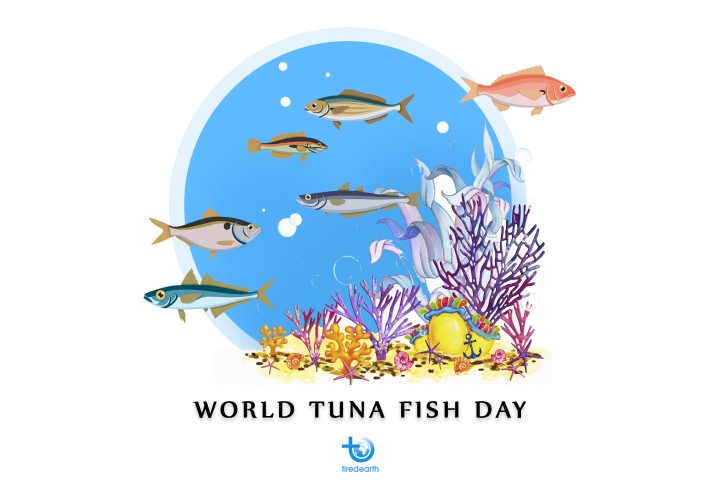What Are the Threats?
Major threats to the survival of fish populations include overfishing, bad fishing practices, invasive species, pollution, and disease. Here we remark many threats to tuna:
Acidification of Sea
For this study, researchers from the University of California at Santa Barbara, the Inter-American Tropical Tuna Commission and other organizations collected yellowfin larvae from a commercial aquaculture bloodstock which is normally exposed to pH levels between 8.27 and 7.74. That’s slightly less acidic then neutral water, which has a pH of 7, but also less acidic than many natural conditions. The larvae were taken then taken to a lab and exposed to waters with four different levels of carbon dioxide, which changed the pH. The first tank, considered the control, had a pH of 8.1. The second had a pH of 7.6, which matches global warming projections for the year 2100, while the third had a pH of 7.3, matching projections for the year 2300. A fourth pH level of 6.9 was considered the “lowest projection for the Pacific Ocean.”
All of that acid added up. The researchers found that it caused damage to the liver, kidney, pancreas, muscle tissue and eyes of the yellowfin larvae—all within a week of exposure. Their growth rates also suffered, ranging from 20 to 41 percent.
Over-Fishing
Bluefin tuna is one of nature's most successful ocean inhabitants, the biggest of the tuna and a top-of-the-food-chain fish with few natural predators. But the advent of industrial fishing methods and a taste for the species among rich sushi devotees have led to its being hunted to the brink of extinction.
Equally concerning is the fact that about 90% of specimens currently fished are young fish that have not yet reproduced.
High Demand
Tuna are especially in danger because they’re in high demand. Since they sell at high market prices, there’s little external pressure to protect the population from overfishing. Tuna also have longer life spans than other fish, so they mature and reproduce at a later age. If a tuna population is dramatically reduced, then it can take a long time for it to bounce back. "All three bluefin tuna species are susceptible to collapse under continued excessive fishing pressure,” said Kent Carpenter, a manager at the IUCN and an author of the paper, in a statement.
Spread of Invasive Species
Invasive species (also referred to as exotic, alien, or non-native species) are defined by the U.S. Fish and Wildlife Service as “infiltrators that invade ecosystems beyond their historic range”(NWRS, 2006). When introduced to a new habitat where they happen to be particularly fit for survival, invasive species quickly dominate the naturally occurring wildlife and throw the ecosystem out of balance. Because invasive species reproduce quickly, take resources from native plants, and are hard to eliminate, there are huge losses in biodiversity related to the increased introduction of nonnative species into societies. Tuna is also suffering from these invasive species and are declined every day.
Pirate Fishing
Bluefin tuna populations have declined severely from overfishing and illegal fishing over the past few decades –not just Atlantic bluefin tuna, but also Pacific bluefin tuna and Southern bluefin tuna. Population declines have been largely driven by the demand for this fish in high end sushi markets.
Illegal fishing of Atlantic bluefin is a big problem and the fishery has been plagued by lack of enforcement and control.


